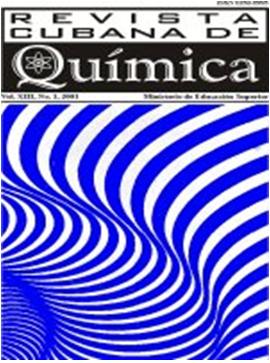Design of drugs with potential antitumoral activity
Abstract
Cancer is a health problem, resulting in the first cause of death worldwide. In the present paper, a Quantitative Structure-Activity Relationship (QSAR) study was developed as a tool for the design of new drugs with potential antitumor activity. Discriminant Linear Analysis and Neural Network were the mathematics methods used to estimate the activity of in a data set consisting in 300 compounds. The biological activity, extracted from the US National Cancer Institute was divided by cluster analysis in a training and prediction series. A model with 10 variables and 84,33 % of correct classification was obtained by a discriminant function meanwhile, the neural network tested with the same number of variables resulted in a 89,67 % of accuracy. Also was calculated the contribution of different structural fragments on the cytostatic activity, and quantified their contribution. Six new compounds were designed predicting a good antitumor activity. In general, the predictive quality of the neural network model was higher than the linear discriminant.
Keywords: cancer, QSAR study, antitumor activity.
Downloads
Published
How to Cite
Issue
Section
License
This journal provides immediate open access to its content, based on the principle that offering the public free access to research helps a greater global exchange of knowledge. Each author is responsible for the content of each of their articles.























